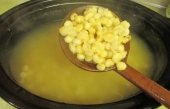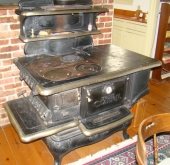
 2
2








"You must be the change you want to see in the world." "First they ignore you, then they laugh at you, then they fight you, then you win." --Mahatma Gandhi
"Preach the Gospel always, and if necessary, use words." --Francis of Assisi.
"Family farms work when the whole family works the farm." -- Adam Klaus








 3
3




Will Holland wrote:Really glad you posted this. I grew a bunch of corn this year with the intention of making tortillas. I had no idea about the nixtamalization. How do I do it?

 1
1




 1
1




"We're all just walking each other home." -Ram Dass
"Be a lamp, or a lifeboat, or a ladder."-Rumi
"It's all one song!" -Neil Young
 1
1




Judith Browning wrote:Hi, James....I like this idea of beans mixed with the masa for tortillas and want to try it. I was wondering if there might be another way to do that final puff without a microwave as I don't use that appliance....maybe in the oven or back on a hot iron griddle? do you fill them then like a pita bread?
Thanks!
 1
1




"We're all just walking each other home." -Ram Dass
"Be a lamp, or a lifeboat, or a ladder."-Rumi
"It's all one song!" -Neil Young

 1
1




Judith Browning wrote:I was wondering if there might be another way to do that final puff without a microwave as I don't use that appliance....maybe in the oven or back on a hot iron griddle? do you fill them then like a pita bread?
Works at a residential alternative high school in the Himalayas SECMOL.org . "Back home" is Cape Cod, E Coast USA.





Invasive plants are Earth's way of insisting we notice her medicines. Stephen Herrod Buhner
Everyone learns what works by learning what doesn't work. Stephen Herrod Buhner




Anne Miller wrote:The easy way for me is with a cast iron tortilla press:

source
This would work well with the above recipes.
Then slap the tortilla on a cast iron grill for a few minutes.
Lif Strand
New Mexico USA
 1
1




Invasive plants are Earth's way of insisting we notice her medicines. Stephen Herrod Buhner
Everyone learns what works by learning what doesn't work. Stephen Herrod Buhner

|
This ad is so tiny, it is contemplating augmentation:
Learn Permaculture through a little hard work
https://wheaton-labs.com/bootcamp
|





